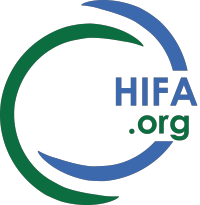[Re: https://www.hifa.org/dgroups-rss/open-access-25-removing-barriers-betwee... ]
Thank you for raising these important questions, Rabia.
I believe the solution to translating evidence into practice requires a whole knowledge ecosystem approach in which different actors work together to do their part.
I can offer my perspective, as the Managing Editor of a diamond OA journal, Global Health: Science and Practice (GHSP), on what an OA journal might be able to contribute in this ecosystem. Briefly, GHSP is published by the Johns Hopkins Center for Communication Programs (CCP) and in its 12th year of publication. Up until February of this year, we were able to offer our publication free of charge to both readers and authors with funding from the U.S. Agency for International Development (USAID). The loss of USAID support forced us to temporarily halt our operations, but CCP relaunched the journal in August and is committed to exploring ways to sustain GHSP without imposing fees on authors or readers. (See https://www.ghspjournal.org/content/13/1/e2400608)
From the outset, GHSP’s goal was to facilitate the use of valuable knowledge and experience from public health program implementation by other practitioners to maximize program investments, avoid reinventing the wheel, and ensure positive health impact. We do this through a number of ways:
- First and foremost, GHSP eliminates barriers to sharing and accessing knowledge in scholarly publications—with no author fees or reader fees. Running a journal takes money though, and the business model for most OA journals is to charge article processing fees to authors. We believe this creates many inequities and problems, one of which is a tendency for OA journals to focus on the quantity of articles published (to bring in sufficient revenue) rather than the quality of articles. Support from donors, philanthropies, or others for community-owned diamond OA journals is critical for sustaining high-quality publications that focus on sharing thoughtful and useful knowledge that readers, in turn, are more likely to put into use.
- We are flexible in our article format to make the content more practical and accessible. We also use various formatting and synthesis techniques to further distill key points of articles, such as a Key Findings and Implications box at the beginning of articles and call-outs in the sidebar throughout the articles.
- We have adapted published articles into different formats to better reach different audiences, including practitioners at the community level. Admittedly, we haven’t been able to do as much of this as we want to due to limited resources, and we welcome opportunities to invest even more in this.
- Last but not least, we work in partnership with our authors to ensure the key messages of articles are shared with practitioners in the countries of focus of the articles. For example, in our author reflexivity checklist (https://www.ghspjournal.org/content/instructions-authors#Reflexivity), we ask authors to have a plan in place to share their findings with country stakeholders.
I would love to hear other ideas on what more OA journals, like GHSP, can do to help translate evidence into practice!
Best regards, Ruwaida Salem
HIFA profile: Ruwaida Salem is a Senior Program Officer at Johns Hopkins Center for Communication Programs, in the United States. She is the managing editor of Global Health: Science and Practice. Email: ruwaida.salem AT jhu.edu

